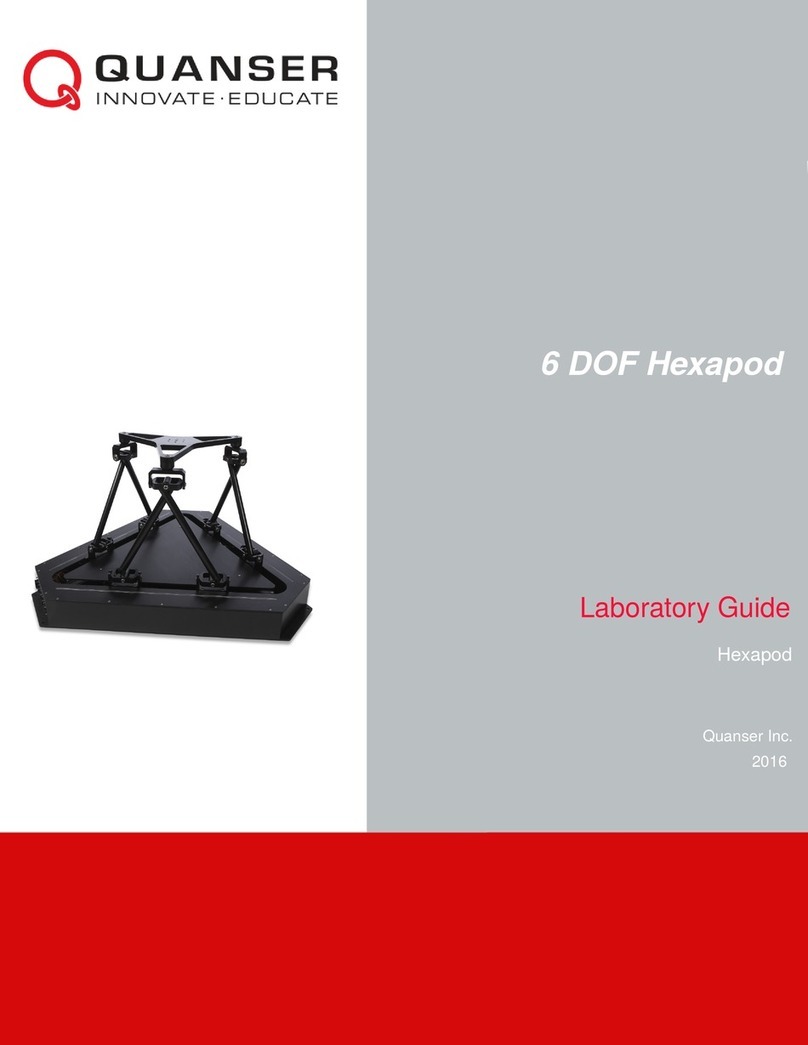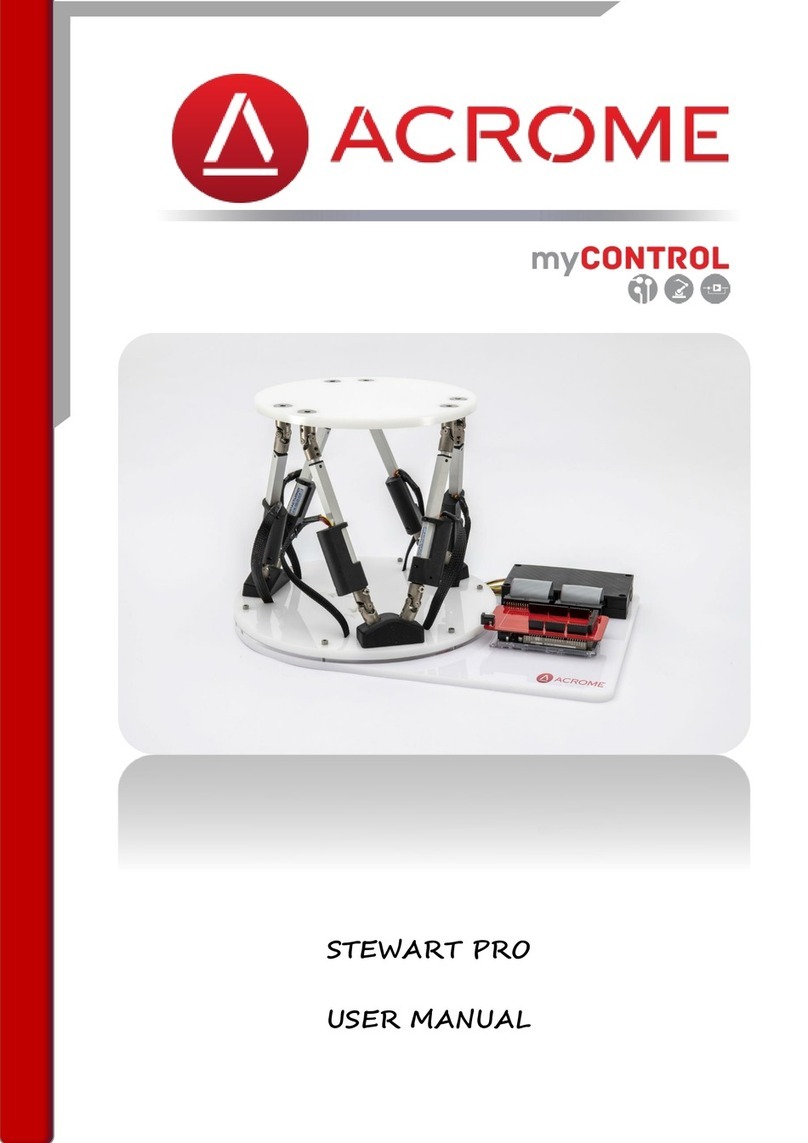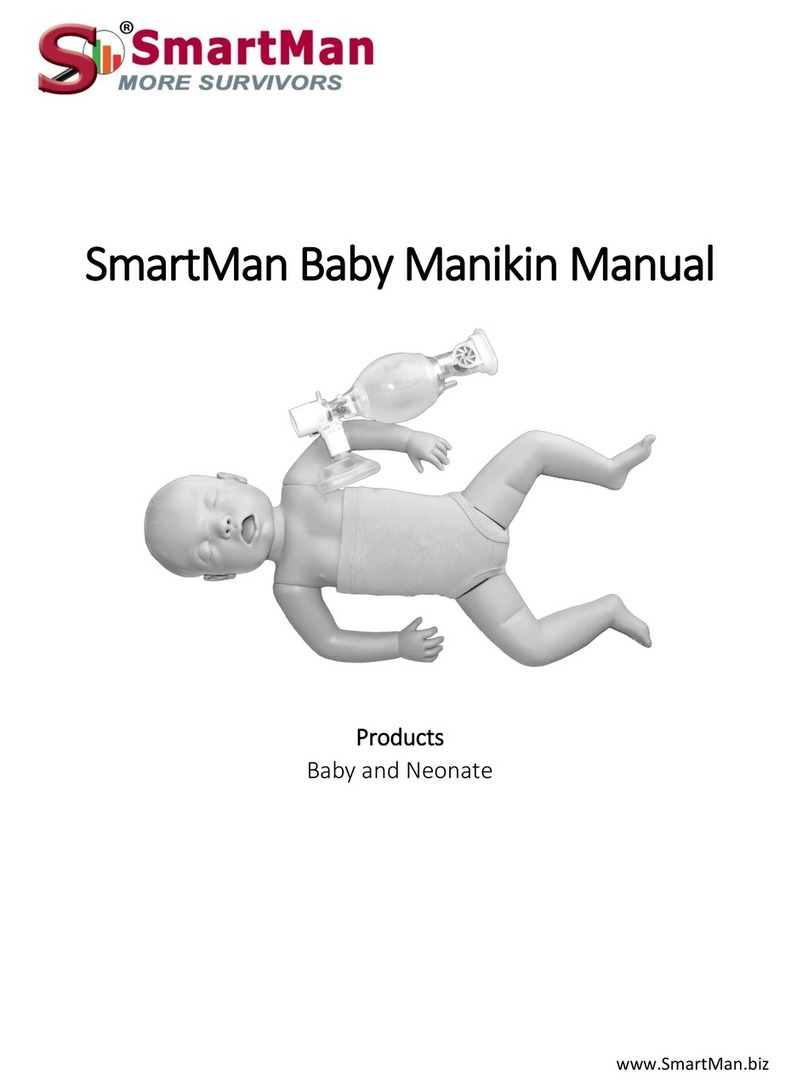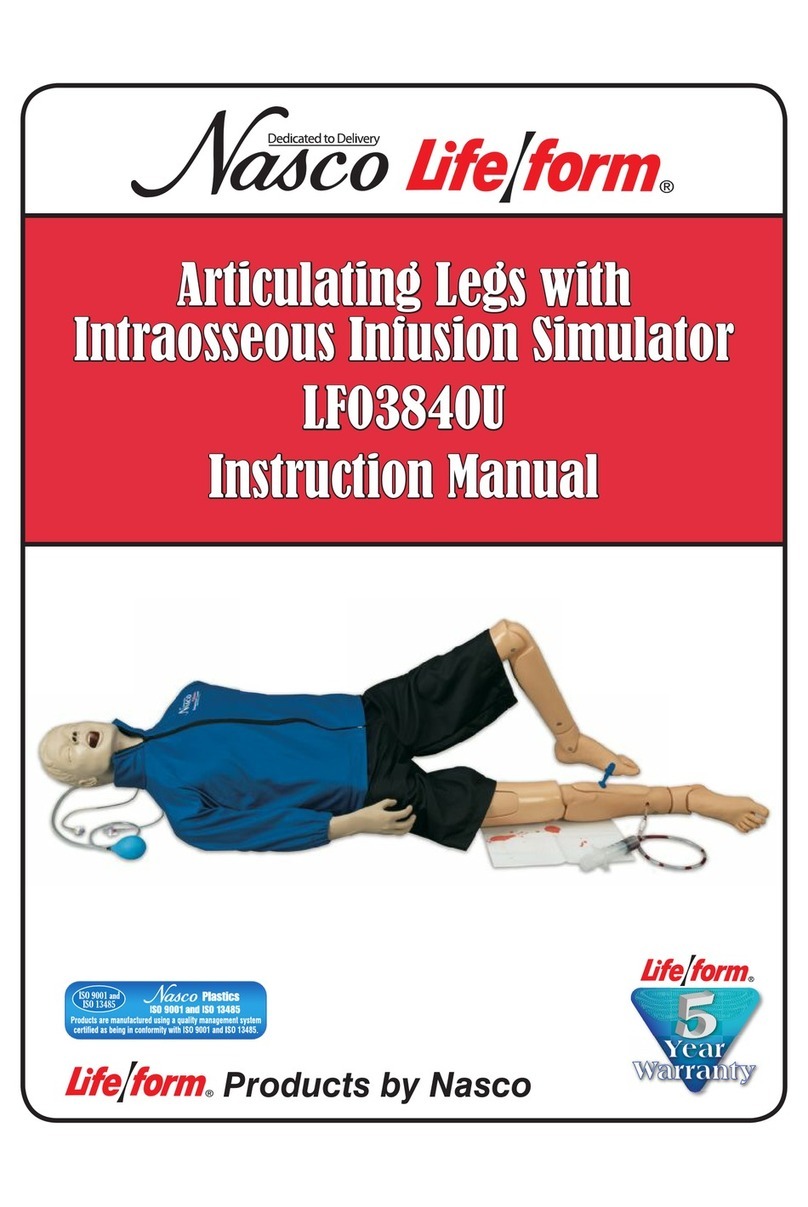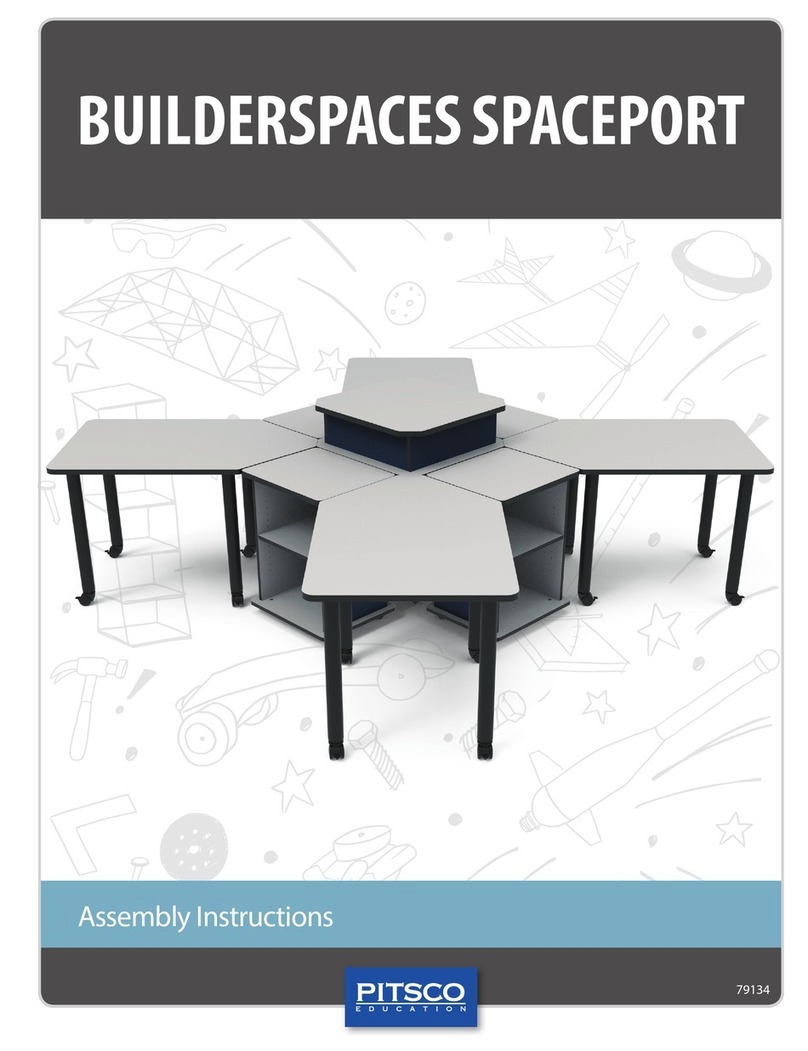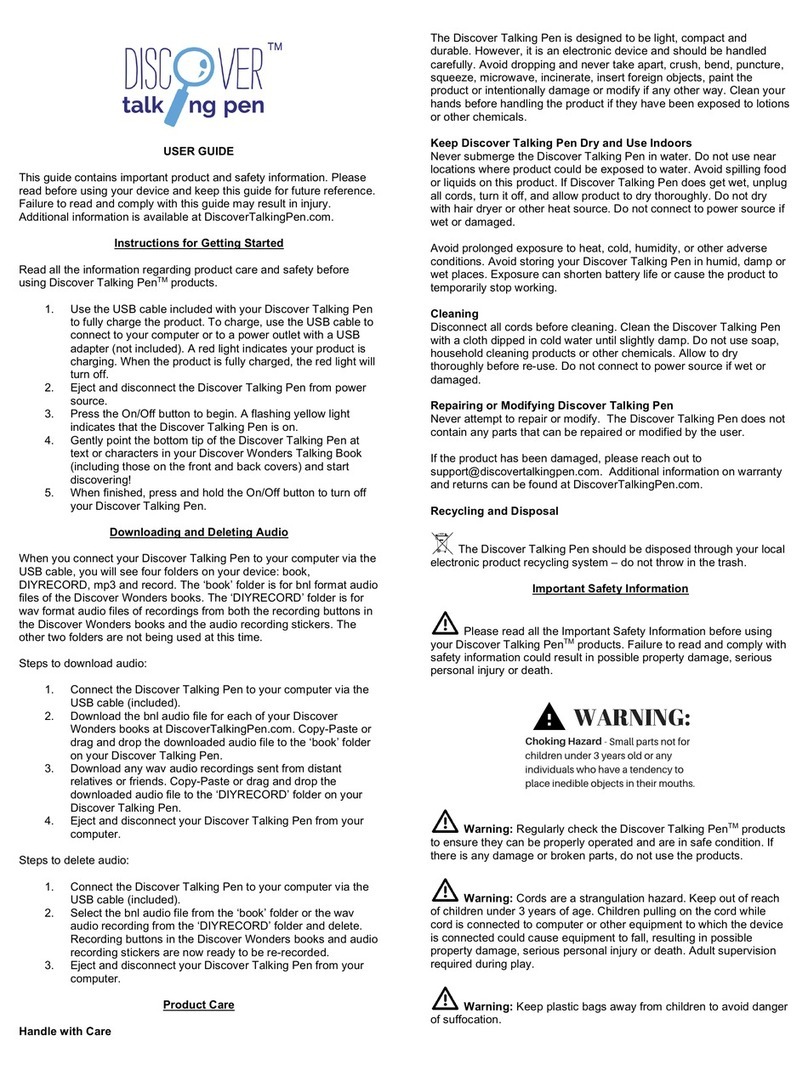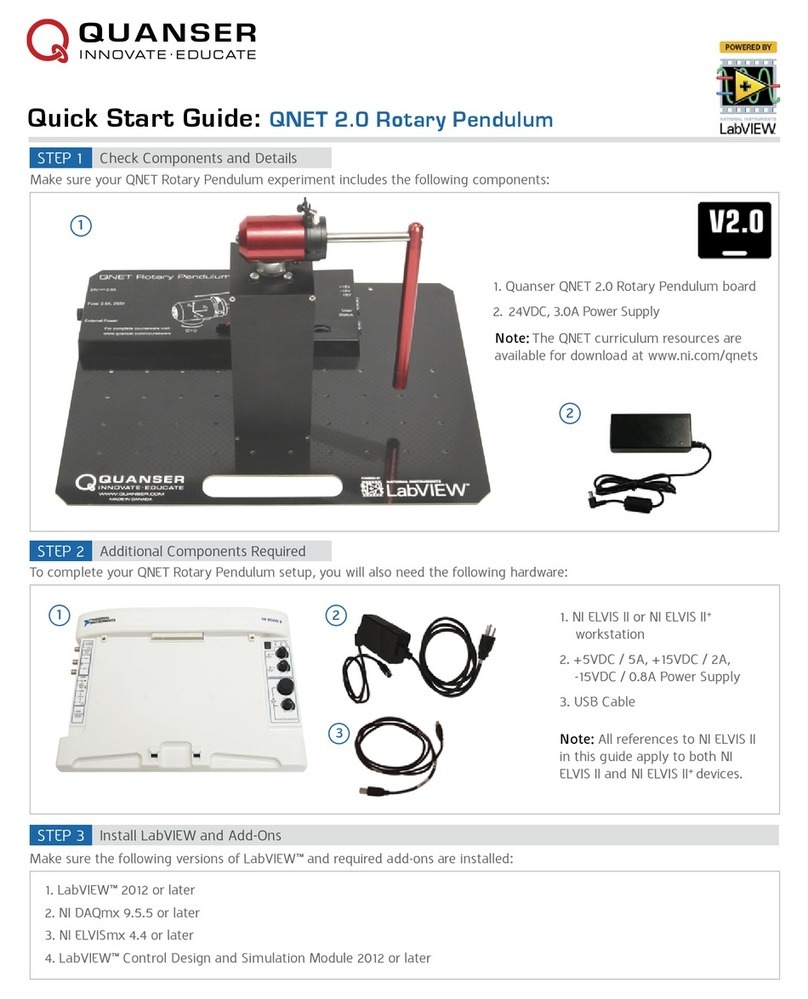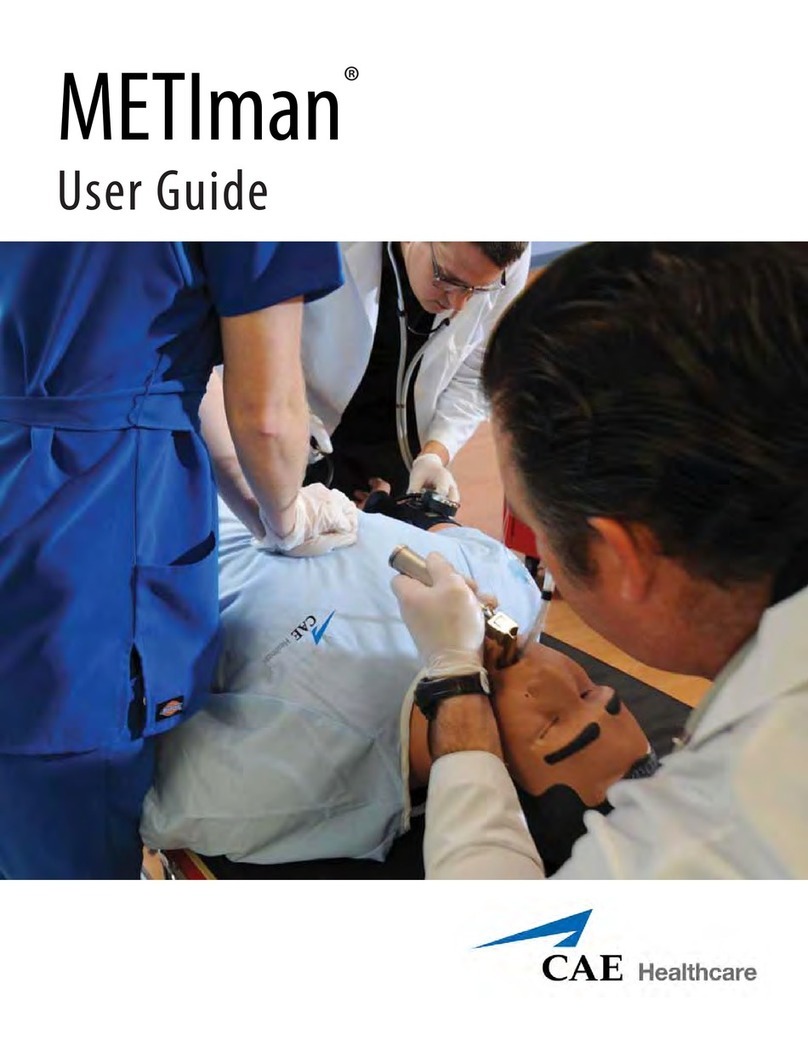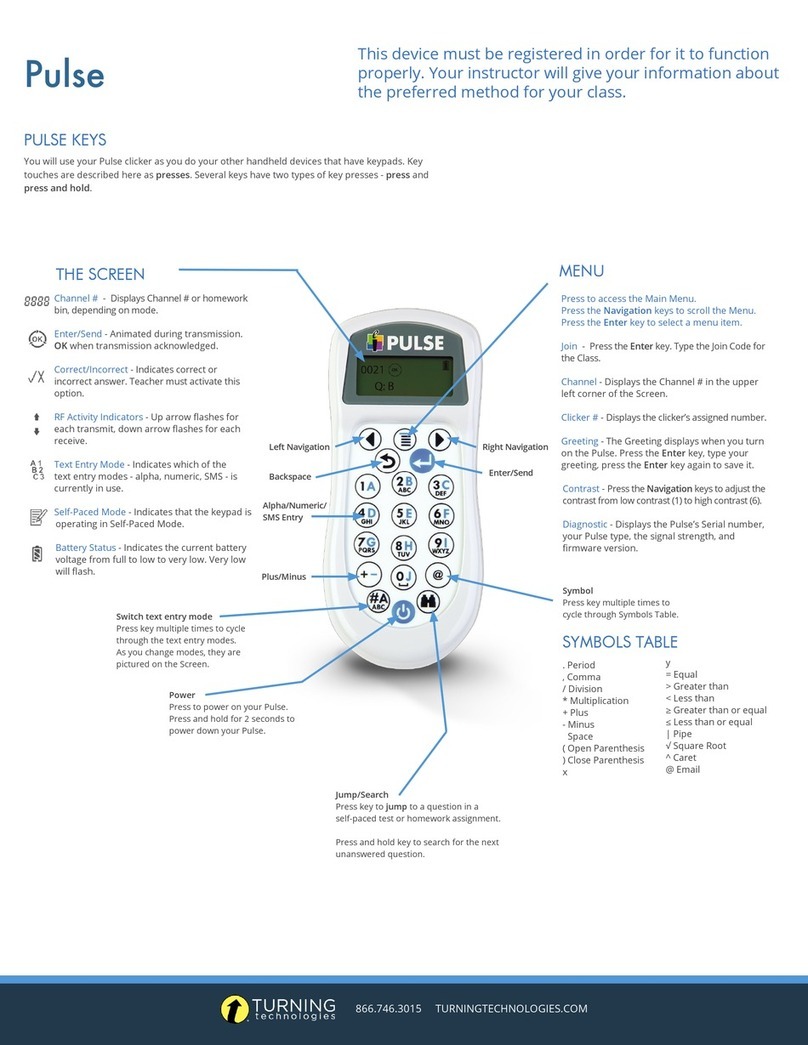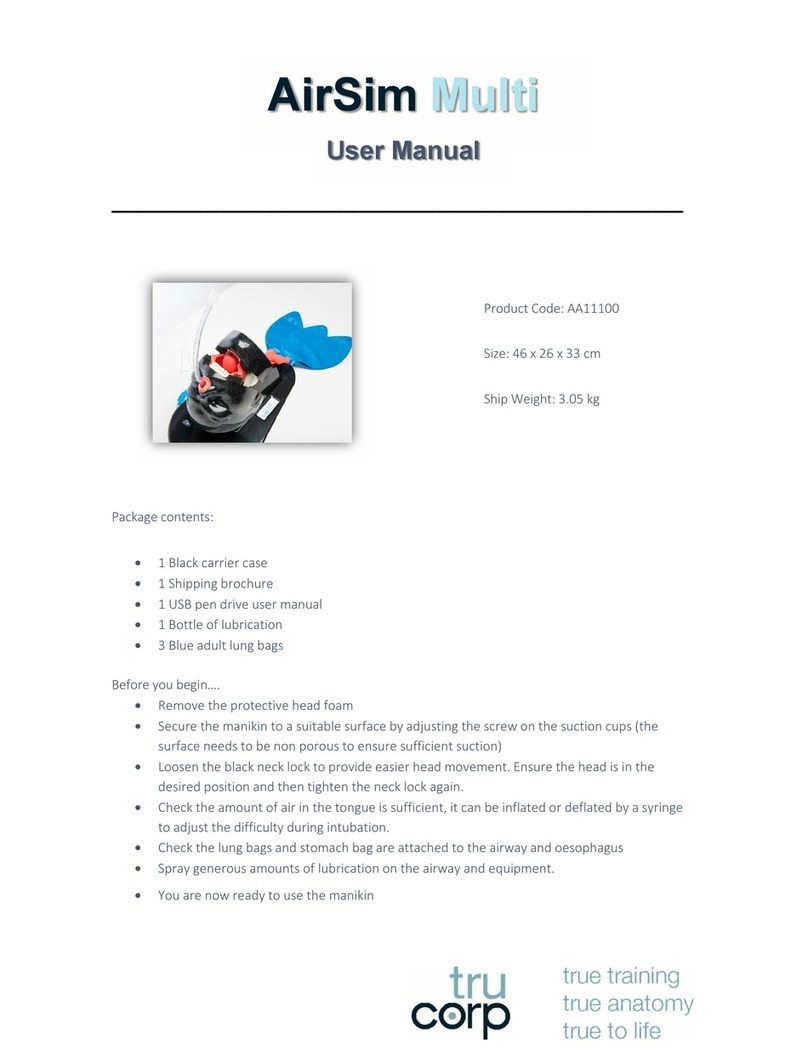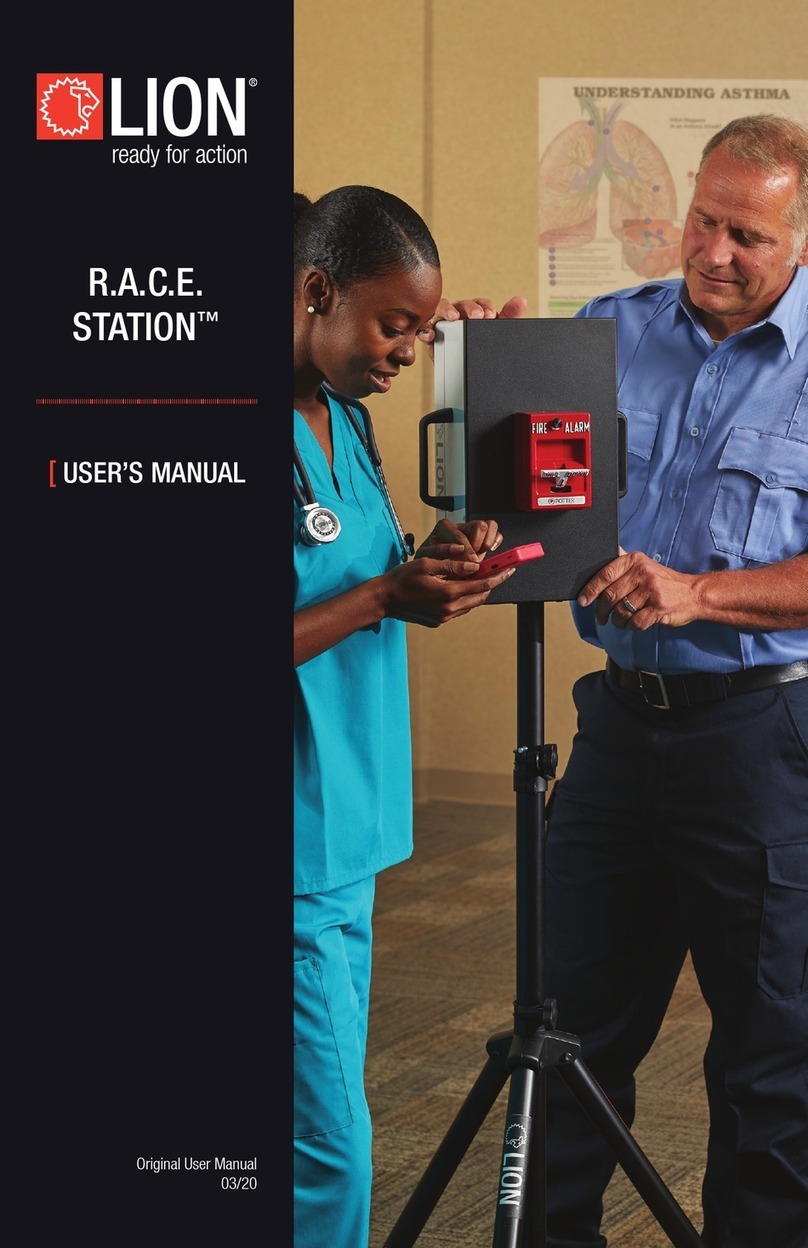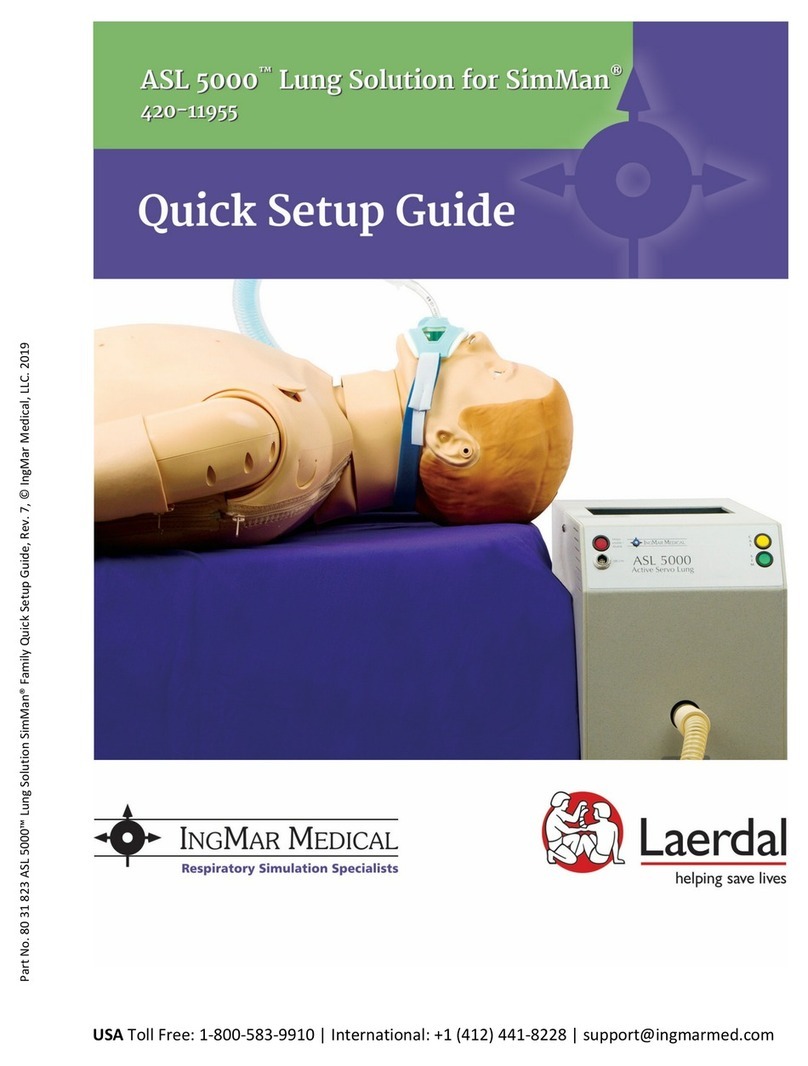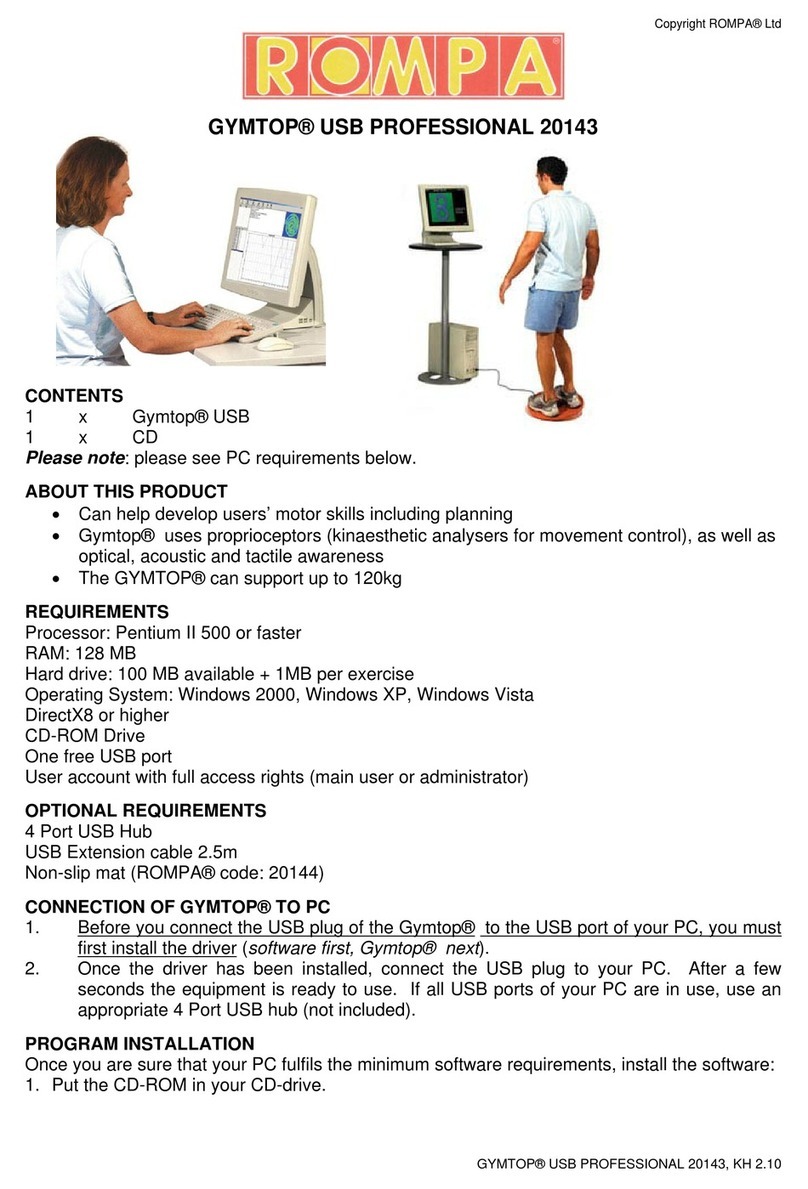
2.8 Assembly and Connection to a Power Supply
The simulator must be set up according to relevant electrical regulations. Assemble
and connect the device in accordance to the electrical and mechanical requirements
specified in the provided guides. Assemble the device in the way and order de-
scribed in the provided guides.
Assembly
The simulator is heavy. Trying to move or to lift the simulator on your own could
cause injury or damage to the simulator. The simulator should be carried by two
people only.
Condensed moisture from the air might cause damage to the simulator. If the simu-
lator components are very cold from transporting, let them warm up at room tem-
perature before assembly and operation. Only switch on the simulator if the simula-
tor and room temperature are between 10–30 °C (50–86 °F).
The weight of the lifting column cannot be carried by the support feet alone; it must
not be „floating“ over the floor. After adjusting the leveling feet, verify that the lifting
column is in complete contact with the floor.
The touch screen is not screwed onto the monitor arm and is not secured against
removal. This may cause it to fall down, e.g. when connecting the cables. Make sure
to hold the touch screen whenever necessary during the remaining assembly steps
so that it cannot fall down or otherwise become damaged. Make sure that the moni-
tor arm has been securely mounted to the mounting receptacle before attaching the
touch screen (Âsection4.5 on page23).
Assembly of the optional BIOM®
The BIOM has movable parts that could lead to contusions, especially when pivot-
ing the BIOM into the optical axis of the microscope. When adjusting the BIOM, be
careful not to pinch your fingers between moving parts.
Connection to a power supply
When setting up the simulator, follow the instructions of other devices you are con-
necting to it (e.g. storage devices). Those instructions may contain important safety
measures and information regarding permitted application of the devices.
The device can be connected to different power supply voltages. If the device’s
voltage setting does not match the power supply voltage in your country, this may
cause damage to the device. Only connect the simulator to a grounded power outlet
that delivers the required voltage. Normally, the device is delivered with the cor-
rect voltage setting of your country. Before connecting the simulator to a power
source, check if the voltage setting matches the power supply voltage in your coun-
try (Âsection4.10 on page30).
Trying to change the voltage setting while the simulator is connected to a power
source, may lead to injury or death through electrical shock. Always disconnect the
simulator from the power source before changing the voltage setting.
Eyesi Surgical Simulator – Installation and Operating Guide
10
Safety
